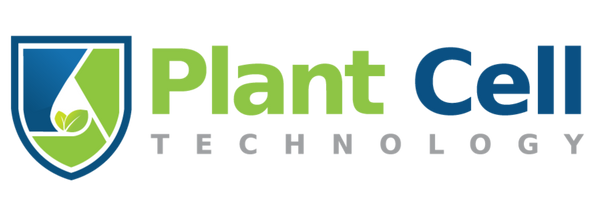
The Main Synthetic and Natural Plant Growth Hormones used in Tissue Culture
As a content and community manager, I leverage my expertise in plant biotechnology, passion for tissue culture, and writing skills to create compelling articles, simplifying intricate scientific concepts, and address your inquiries. As a dedicated science communicator, I strive to spark curiosity and foster a love for science in my audience.


PCT Product Catalog
We have got good news!
Plant Cell Technology has extended its catalog of products just for you. This time, we brought you all plant growth regulators (PGRs) or hormones used in tissue culture. If you are confused about the products and their uses, this article is for you. In this article, we talk about different plant growth hormones and their applications in tissue culture, why are they required, and much more!
What are plant growth regulators?
Plant growth regulators, also known as phytohormones, are small chemical molecules produced by plants for their growth and development. Plant hormones are categorized into two groups based on their origin: natural (if produced within plants) and synthetic hormones (if produced in laboratories). There are five major classes of plant growth hormones: Auxin, Cytokinin, Gibberellin, Ethylene, and Abscisic acid. However, we mainly use In this article, we will only analyze the three main hormones that are also called plant growth promoters.
1. Cytokinins
Cytokinins are the growth hormones that promote cell division in plant roots and shoots. Naturally occurring cytokinins are only purine-derived compounds. But there are also some synthetic purine-derived cytokinins which include kinetin, zeatin, and 6-benzylaminopurine. There are other synthetic phenylurea derived cytokinins which include diphenylurea and thidiazuron. Of the naturally occurring cytokinins, zeatin and 2iP (2-isopentenyl adenine) have some use in plant tissue culture.
The use of naturally occurring cytokinin is now widespread because they are expensive and unstable. So, the best alternatives to these hormones include benzylaminopurine, kinetin, and meta topolin. Let’s learn more about these plant hormones.
1a. Benzylaminopurine (BAP)
What is it?
It’s a synthetic cytokinin, a plant growth regulator or plant hormone that supports the development of plants when added to growth media.
Applications
- It influences plant growth and development, sets blossoms, and stimulates fruit richness by stimulating cell division.
- It modifies MS media for shoot initiation in cultures
- It stimulates seed germination.
- It’s an adenine-based cytokinin that’s perfect to be supplemented with culture media including MS media, Gamborg’s media, and Chu’s N6 media.
1b. Kinetin
What is it?
It’s a synthetic cytokinin that stimulates cell division when added to growth media such as Murashige and Skoog media in conjunction with auxins.
Applications
- It helps to stimulate cell division and promote the proper growth of plants.
- It induces callus development and shoots initiation from callus at its later stages.
- It’s used for shoot induction and proliferation.
1c. Meta Topolin
What is it?
It’s an adenine-based cytokinin required for the shoot regeneration of cultures.
Applications
- It’s used for shoot regeneration.
- Plants supplemented with meta topolin cause lesser root inhibition compared to other cytokinins.
2. Auxins
Auxins are a class of growth hormones that promote both cell division and cell elongation. These are categorized into two categories based on their origin: natural if derived from plants and synthetic if produced in labs. The naturally occurring auxin includes IAA (indole-3-acetic acid). Some other auxins include IBA (indole-3-butyric acid), 2,4-Dichlorophenoxyacetic acid (2,4-D), and 1-naphthylacetic acid (NAA). Plant Cell Technology brought you two of these commonly used hormones that include IAA and IBA. Let’s learn more about them.
2a. Indole-3-Acetic Acid (IAA)
What is it?
It’s a natural auxin, a plant growth regulator or plant hormone that is required for the proper growth and development of plants.
Applications
- It has a role in cell enlargement and division, tissue differentiation, and response to light and gravity.
- In the plant tissue culture, it’s used for the organ development of plants like shoots and roots.
- It’s used as a supplement in growth media like MS media or Gamborg’s media for callus initiation.
2b. Indole-3-Butyric Acid (IBA)
What is it?
It’s an auxin family plant hormone that is used in agriculture and tissue culture for the development of plant roots.
Applications
- It helps to initiate adventitious root formation in cultured tissues.
- It helps to stimulate callus development.
- It’s thought to be a precursor of indole acetic acid (IAA).
3. Gibberellic Acid
What is it?
It’s a growth hormone and plant growth regulator that promotes the proper growth and development of plants in culture.
Applications
- It has a role in cell division and elongation of tissues in cultures.
- In some plants including Arabidopsis and peas, it helps in seed germination.
- It’s supplemented with growth media like Murashige and Skoog media for the proper development of young leaves and stems.
- It’s essential for the flowering of plants.
- It’s also used for agricultural and home gardening uses.
More for you in the PCT store!
That’s not it! Plant Cell Technology brought two more essential elements of your tissue culture media that help to keep your culture healthy and promote proper development.
1. Folic Acid
What is it?
It’s a supplement having a role in the growth and development of cultured plants. It’s also known as folate or B9 Vitamin.
Applications
- Folic acid helps to fulfill the deficiency of folates in crops. Any disturbance in a plant's folate metabolism leads to severe growth inhibition and low productivity.
- It has an essential role in amino acid metabolism and nucleic acid synthesis in plants.
- They can be supplemented to staple crops like rice, potato, and maize that contain insufficient amounts of folates.
2. Myo-Inositol
What is it?
It’s a sugar-like carbohydrate that is important for the normal growth and development of plants.
Applications
- It helps in the cell wall formation of plant cells.
- It protects the plants against salt stress.
- It’s involved in the storage and transportation of some plant hormones like auxin.
You got what you wanted! Plant Cell Technology is helping you in every way it can. So, do share your experience with us on the given email ID, and don’t forget to subscribe to PCT newsletters to get a regular update on our products, blogs, and videos. Yes, we are consistently making YouTube videos to educate you on tissue culture processes so please let us know how you feel about it! And finally, keep shopping for your tissue culture products from your favorite PCT Store.
Happy culturing!!
!!
References
- https://www.aladdin-e.com/up_files/docs/Plant%20tissue%20culture%20%E2%80%93%20Plant%20growth%20regulators.pdf
- https://www.goldbio.com/documents/1024/Auxins+Cyto...
- https://byjus.com/biology/plant-growth-regulators/
- https://en.wikipedia.org/wiki/Auxin
- https://www.biotrend.com/en/buy/cat-plant-growth-r...
Blog Categories
View by Level
Popular Blogs

How Samantha Bridges the Gap Between the Nursery and the Lab
The Introduction Building a tissue culture program from the ground up requires more than just scientific knowledge—it requires the grit...
Read More
Understanding The Synthetic Seed Technology
Introduction Let’s be honest: traditional plant propagation can be a logistical nightmare. If you’re working with recalcitrant species—those stubborn plants...
Read MoreSubscribe to Our Newsletter








Join the conversation
Your email address will not be published. Required fields are marked